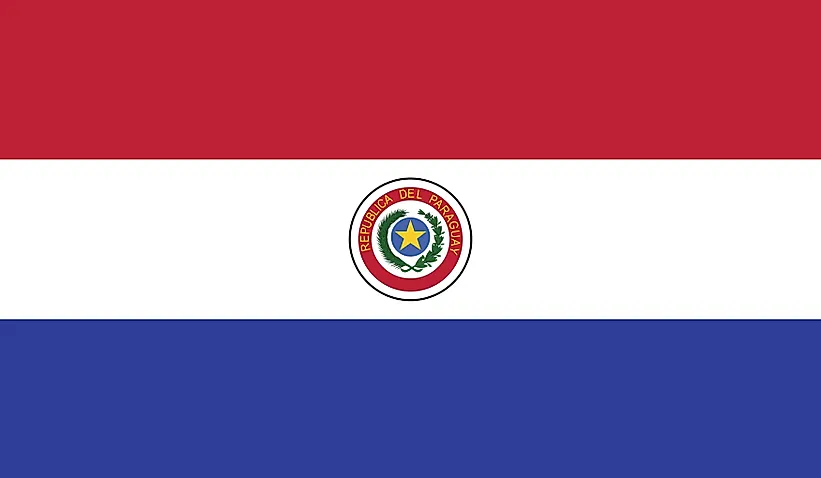
パラグアイ
| 大陸 | 米州 |
| 資本金 | アスンシオン |
| 人口 | 6,862,812 |
| GDP | $64.67 億ドル |
| 一人当たりGDP | $9,500 |
| ダイヤルコード | +595 |
| ISOコード(2文字) | 円 |
| ISOコード(3文字) | プライ |
パラグアイ 風景






パラグアイについて
伝統と現代が調和する国、パラグアイへようこそ。人口約710万人、面積406,752平方キロメートルのパラグアイは、驚くべき文化の回復力と自然の多様性を併せ持ち、南米で最も特徴的な国のひとつとなっています。
地理的特徴と自然の美しさ
パラグアイの地理は、大西洋岸森林となだらかな丘陵地帯が広がる東部地域と、半乾燥平野と湿地帯が広がる西部チャコ地域という、パラグアイ川によって分断された2つの地域に分かれている。
広大なチャコ原生林、イビクイ国立公園、マンデーの滝などがある。この国の多様な生態系は、この地域特有の多様な野生動物や植物を支えている。
保護区には多くの国立公園や保護区があり、特徴的なチャコの生態系や残された大西洋岸森林を保護している。この国の環境保護への取り組みは、ユニークな生物多様性の保全に重点を置いている。
文化遺産と伝統
パラグアイの文化は、先住民グアラニー族とスペイン植民地時代の影響が融合した独特のものである。この国の遺産には、スペイン語と並んでグアラニー語を公用語とする二言語主義が広く含まれている。
伝統芸術には、ニャンドゥティレース作り、陶芸、独特の民族音楽などがある。音楽の伝統にはパラグアイのハープやポルカがあり、伝統舞踊は今でも重要な文化表現である。
パラグアイ料理には、ソパ・パラグアヤ(トウモロコシのパン)、チパー(チーズのパン)、テレレ(冷たいマテ茶)といった独特の料理がある。大家族が集まってテレレを分かち合う伝統は、今でも社会生活の中心となっている。
歴史の旅
パラグアイの歴史は、先住民グアラニー族の文明から、スペインの植民地化、そして独立にまで及んでいる。この国独自の歩みの中には、孤立した時期や大きな紛争も含まれている。
イエズス会の伝道、1811年の独立、壊滅的な被害をもたらした三国同盟戦争(1864~1870年)、チャコ戦争(1932~1935年)などが重要な時期である。こうした試練を乗り越えてきた国の回復力が、この国の国民性を形成してきた。
現代の経済状況
今日のパラグアイ経済は、水力発電と農業、牧畜業を組み合わせたものである。パラグアイは世界有数の大豆と再生可能エネルギーの輸出国である。
最近のイニシアティブは、インフラ整備、農業の近代化、デジタル・イノベーションに重点を置いている。パラグアイの戦略的立地と豊富な資源は、継続的な成長の機会を与えてくれる。
国際関係とグローバルポジション
パラグアイは国際貿易パートナーシップを促進しながら、地域組織への積極的な参加を維持している。パラグアイの再生可能エネルギー資源と農業生産は、世界的な影響力を拡大している。
ご存知でしたか?
- パラグアイは世界有数の再生可能エネルギー輸出国?
- この国には2つの公用語がある:スペイン語とグアラニー語?
- イタイプー・ダムは世界最大級の水力発電施設ですか?
- パラグアイのチャコ地方には、南米で最もユニークな生態系が存在する?
結論
パラグアイは、文化保護と経済発展のユニークな組み合わせを象徴しています。広大なチャコ原生地域から近代的な都市まで、また先住民族の遺産から再生可能エネルギーのリーダー的存在まで、パラグアイは独自の個性を維持しながら進化を続けています。持続可能な発展や経済の多様化といった課題に取り組む中で、パラグアイは独自の文化的アイデンティティを守りながら前進を続けています。